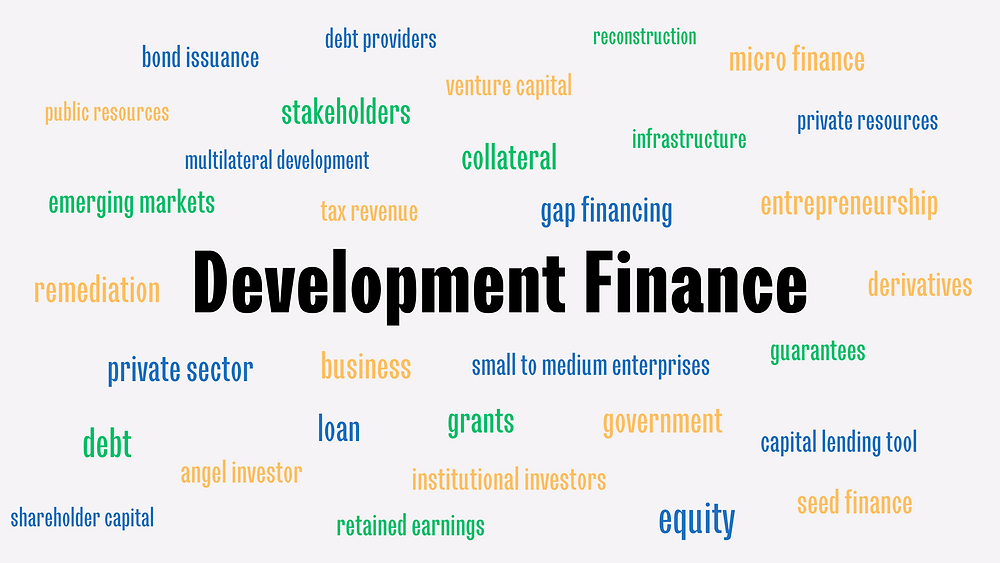
Are Banks Ready for the Next Big Thing?
Are banks ready for the next big thing? That’s the burning question on everyone’s mind as technology reshapes the financial landscape. From AI-powered robo-advisors to blockchain’s potential to revolutionize transactions, the banking industry is facing unprecedented disruption. This isn’t just about keeping up; it’s about reinventing the very nature of banking itself. We’ll dive into the challenges and opportunities facing banks as they navigate this turbulent, yet exciting, new era.
This post explores the key factors shaping the future of banking, including the rise of fintech, the increasing importance of cybersecurity, and the evolving expectations of customers. We’ll examine how banks are adapting to these changes, and whether they’re truly prepared for what lies ahead. We’ll also look at the ethical considerations and the potential for greater financial inclusion, all while considering the ever-present threat of cyberattacks and the need for robust regulatory frameworks.
Technological Disruption
The banking sector, traditionally characterized by slow-moving processes and rigid infrastructure, is undergoing a dramatic transformation fueled by rapid technological advancements. Artificial intelligence, blockchain technology, and cloud computing are no longer futuristic concepts; they are reshaping the financial landscape, forcing banks to adapt or risk obsolescence. This shift necessitates a thorough examination of the impact these technologies are having, and will continue to have, on the industry’s operations and customer experience.The integration of AI, blockchain, and cloud computing is fundamentally altering the way banks operate.
AI-powered systems are automating tasks like fraud detection, customer service, and loan underwriting, significantly improving efficiency and reducing operational costs. Blockchain’s decentralized and secure nature offers potential for streamlining cross-border payments and enhancing transparency in financial transactions. Cloud computing provides the scalability and flexibility needed to handle the ever-increasing volume of data and transactions in the modern banking environment.
This contrasts sharply with the legacy systems of many traditional banks, often built on outdated technology and characterized by siloed data and limited interoperability.
AI’s Impact on Banking Operations
AI is rapidly becoming a cornerstone of modern banking. Its ability to analyze vast datasets and identify patterns allows for more accurate risk assessment, personalized financial advice, and proactive fraud detection. For instance, AI-powered chatbots are providing 24/7 customer support, answering queries and resolving simple issues without human intervention. Furthermore, AI algorithms are being used to automate loan applications, significantly reducing processing times and improving efficiency.
The adoption of AI in areas like algorithmic trading is also transforming investment strategies and portfolio management. The shift from manual, rule-based systems to AI-driven, data-centric approaches is a major catalyst for change within the industry.
Blockchain’s Potential for Secure Transactions
Blockchain technology offers a revolutionary approach to securing and managing financial transactions. Its decentralized nature eliminates the need for a central intermediary, reducing the risk of fraud and enhancing transparency. Imagine a system where international payments are processed instantly and securely, with all transactions recorded on a publicly auditable ledger. This is the promise of blockchain in banking. While still in its early stages of adoption, blockchain has the potential to significantly disrupt traditional payment systems and reshape the way banks handle cross-border transactions.
Are banks ready for the next big thing? I’m wondering if their legacy systems can keep up with the pace of innovation. To truly modernize, they need agile development solutions, and that’s where exploring options like domino app dev the low code and pro code future becomes crucial. This could be the key to unlocking faster development cycles and keeping up with customer expectations; otherwise, are they really ready for what’s next?
Pilot programs and successful implementations are already demonstrating its viability for specific applications.
Cloud Computing and Scalability in Banking
The move to cloud-based infrastructure is crucial for banks to manage the ever-growing volume of data and the demands of a digital-first world. Cloud computing offers the scalability and flexibility needed to handle peak transaction loads and accommodate rapid growth. Traditional banking systems, often reliant on on-premise infrastructure, struggle to keep pace with these demands. Migrating to the cloud allows banks to access advanced analytics tools, improve security, and reduce infrastructure costs.
This shift towards cloud-native applications is a defining characteristic of the modern banking architecture.
Hypothetical Disruptive Scenario: Decentralized Finance (DeFi)
Imagine a scenario where a new decentralized finance (DeFi) platform emerges, offering users access to a range of financial services, including lending, borrowing, and investing, without the need for traditional banks. This platform leverages blockchain technology and smart contracts to automate transactions and provide transparency. This could significantly disrupt traditional banking operations by attracting customers seeking faster, cheaper, and more accessible financial services.
While DeFi faces regulatory challenges, its potential to disrupt the established financial order is undeniable. The rapid growth of DeFi applications showcases the potential for such a disruption.
Technology Adoption Rates Across Banking Institutions
| Technology | Large Banks | Medium Banks | Small Banks |
|---|---|---|---|
| AI | High (Extensive implementation in various areas) | Medium (Selective adoption in key areas) | Low (Limited adoption due to resource constraints) |
| Blockchain | Medium (Pilot projects and strategic partnerships) | Low (Exploratory phase, limited implementation) | Low (Minimal adoption due to complexity and cost) |
| Cloud Computing | High (Significant migration to cloud infrastructure) | Medium (Increasing adoption, but with challenges) | Medium (Gradual adoption driven by cost-effectiveness) |
Cybersecurity Threats and Resilience: Are Banks Ready For The Next Big Thing
The digital transformation sweeping the banking sector has ushered in an era of unprecedented convenience and efficiency. However, this interconnectedness also exposes banks to a constantly evolving and increasingly sophisticated array of cybersecurity threats. The sheer volume and velocity of digital transactions, coupled with the vast amounts of sensitive customer data held by financial institutions, make them prime targets for malicious actors.
Understanding and mitigating these risks is no longer a luxury; it’s a critical imperative for survival in the modern financial landscape.The evolving cybersecurity landscape presents significant challenges for banks. Traditional perimeter-based security models are proving insufficient against today’s advanced threats, which often leverage sophisticated techniques to bypass traditional defenses. The rise of cloud computing, mobile banking, and the Internet of Things (IoT) expands the attack surface, creating new vulnerabilities that require innovative security solutions.
Moreover, the increasing reliance on third-party vendors and outsourcing introduces additional layers of risk that need careful management.
Significant Threats Facing Banks in the Digital Age
Banks face a multitude of threats, ranging from relatively simple phishing attacks to highly complex, state-sponsored cyber espionage campaigns. Some of the most significant threats include:Phishing and social engineering attacks remain highly effective, exploiting human psychology to trick employees and customers into revealing sensitive information. Ransomware attacks, which encrypt data and demand payment for its release, pose a significant operational and financial risk, potentially disrupting services and leading to substantial data loss.
Advanced Persistent Threats (APTs), often state-sponsored, involve sophisticated, long-term attacks aimed at stealing sensitive data or disrupting operations. Denial-of-service (DoS) attacks can overwhelm a bank’s systems, rendering them inaccessible to customers and employees. Data breaches, whether through hacking or insider threats, can expose sensitive customer information, leading to reputational damage, financial penalties, and legal liabilities. Finally, the increasing use of artificial intelligence (AI) by both banks and attackers creates a new arms race in cybersecurity, with AI being used for both offensive and defensive purposes.
Examples of Successful and Unsuccessful Responses to Cyberattacks
The 2016 Bangladesh Bank heist, where hackers stole $81 million by exploiting weaknesses in the SWIFT system, serves as a stark example of a major unsuccessful response. The attackers exploited vulnerabilities in the bank’s internal systems and used fraudulent SWIFT messages to transfer funds. In contrast, the response by JPMorgan Chase to a 2014 cyberattack, where hackers attempted to steal customer data, is considered a successful response.
The bank detected the attack early, contained the breach, and worked diligently to mitigate the damage, notifying affected customers and implementing enhanced security measures. These contrasting examples highlight the critical importance of proactive security measures, robust incident response plans, and thorough post-incident analysis.
Best Practices for Enhancing Cybersecurity Measures within Banking Institutions
Strengthening cybersecurity requires a multi-faceted approach that encompasses technological, procedural, and human elements.A crucial element is the implementation of robust security technologies. This includes advanced firewalls, intrusion detection and prevention systems, data loss prevention (DLP) tools, and multi-factor authentication (MFA). Regular security assessments and penetration testing are vital for identifying vulnerabilities before attackers can exploit them. Employee training and awareness programs are equally critical.
Employees must be educated about phishing scams, social engineering tactics, and safe password practices. A strong security culture, where security is everyone’s responsibility, is paramount. Incident response planning is crucial; banks must have well-defined procedures for handling cyberattacks, including containment, eradication, recovery, and post-incident analysis. Finally, strong regulatory compliance is essential, adhering to relevant data protection regulations and industry best practices.
Regular audits and independent assessments can help ensure compliance and identify areas for improvement.
Regulatory Changes and Compliance
The rapid pace of technological innovation in the banking sector presents significant challenges for regulators worldwide. Maintaining financial stability while fostering innovation requires a delicate balancing act, forcing regulatory bodies to constantly adapt their frameworks. This necessitates a deep understanding of both the opportunities and risks presented by new technologies, and a willingness to experiment with innovative regulatory approaches.The challenges banks face in adapting to evolving regulatory frameworks are multifaceted.
New regulations often require substantial investments in technology and personnel to ensure compliance. Furthermore, the complexity of some regulations can lead to operational inefficiencies and increased compliance costs, potentially stifling innovation. The constant need to update systems and processes to meet changing requirements also diverts resources from core business activities.
Variations in Regulatory Environments Across Countries
Regulatory environments vary significantly across different jurisdictions. For example, the European Union’s approach to open banking, with its emphasis on data sharing and third-party access to customer data, differs considerably from the more cautious approach taken in some Asian markets. These differences can create challenges for multinational banks operating across multiple jurisdictions, requiring them to navigate a complex patchwork of regulations.
The impact on banking innovation is equally varied; a more permissive regulatory environment may encourage faster adoption of new technologies, while a stricter approach may prioritize stability over rapid change. The UK’s relatively agile approach to fintech regulation, for instance, has fostered a vibrant fintech ecosystem, attracting significant investment and driving innovation. In contrast, countries with more stringent regulations may see slower adoption of new technologies, but potentially greater financial stability.
Innovative Regulatory Approaches
Some jurisdictions are exploring innovative regulatory approaches that aim to balance innovation with risk mitigation. Regulatory sandboxes, for example, allow fintech companies to test new products and services in a controlled environment, providing valuable feedback to regulators and reducing the risks associated with launching untested technologies. Similarly, the use of technology in regulatory supervision, such as AI-powered monitoring systems, can improve efficiency and effectiveness while reducing the burden on regulated entities.
Singapore’s approach to fintech regulation, which incorporates a strong emphasis on collaboration and experimentation, serves as a good example of a forward-looking approach. Their focus on promoting innovation while ensuring robust consumer protection has fostered a dynamic and competitive fintech sector.
A Hypothetical Regulatory Framework
A hypothetical regulatory framework designed to balance innovation with risk mitigation might incorporate several key features. Firstly, it would adopt a principles-based approach, focusing on outcomes rather than prescriptive rules. This would provide greater flexibility for banks to adopt new technologies while still ensuring they meet key objectives such as consumer protection and financial stability. Secondly, it would utilize a tiered approach to regulation, tailoring the level of oversight to the level of risk posed by specific technologies or activities.
This would allow for greater innovation in lower-risk areas while maintaining stricter oversight in higher-risk areas. Finally, it would foster collaboration between regulators, banks, and fintech companies, encouraging open dialogue and shared learning. This collaborative approach would allow regulators to better understand the challenges and opportunities presented by new technologies and develop more effective and adaptable regulations.
This framework could incorporate elements of stress testing and scenario planning to assess the potential systemic risks of new technologies, ensuring that regulatory responses are proactive rather than reactive. A key element would be the establishment of clear and transparent mechanisms for resolving disputes and addressing grievances, fostering trust and confidence in the regulatory system.
Customer Expectations and Behavior

The banking landscape is undergoing a dramatic shift, driven by evolving customer expectations and technological advancements. No longer are customers content with traditional branch-based services; they demand seamless, personalized, and readily available digital solutions. This necessitates a fundamental rethinking of banking strategies, focusing on customer experience and agility to meet the demands of a rapidly changing market.Customers now expect a level of personalization previously unseen in the financial sector.
This goes beyond simply remembering their name; it involves tailoring financial products and services to individual needs, offering proactive advice based on spending habits, and providing 24/7 access to accounts and support through multiple channels. The rise of fintech companies has further amplified these expectations, setting a new benchmark for convenience and user-friendliness.
Changing Expectations Regarding Digital Services and Personalization
The digital revolution has fundamentally altered customer expectations. Customers expect intuitive, user-friendly mobile banking apps with features like biometric authentication, instant payments, and sophisticated budgeting tools. They also demand seamless integration with other financial services and platforms, such as payment apps and investment platforms. Personalization is key; customers expect banks to understand their individual financial goals and provide tailored recommendations, rather than offering generic products.
For example, a young professional might appreciate personalized investment advice and budgeting tools, while a retiree might prioritize secure online access to their pension and easy-to-understand statements. The failure to meet these expectations can lead to customer churn and a loss of market share.
Emerging Customer Segments and Their Unique Needs
The banking customer base is becoming increasingly diverse, with distinct segments exhibiting unique needs and preferences. For instance, Millennials and Gen Z, digitally native generations, prioritize mobile-first experiences, instant gratification, and transparent pricing. They are more likely to adopt new technologies and are less loyal to traditional banking institutions. Conversely, older generations may prefer a blend of digital and in-person services, prioritizing security and personal interaction.
High-net-worth individuals demand bespoke wealth management services, sophisticated investment options, and personalized financial planning. Understanding these nuanced needs is crucial for banks to develop targeted strategies and offer relevant products and services.
Innovative Customer-Centric Banking Solutions
Several banks are already implementing innovative solutions to meet evolving customer expectations. For example, the use of AI-powered chatbots provides 24/7 customer support, answering queries and resolving issues instantly. Personalized financial management tools, leveraging data analytics, help customers track spending, set budgets, and achieve their financial goals. Open banking initiatives allow customers to securely share their financial data with third-party providers, enabling the development of innovative financial products and services.
Furthermore, some banks are incorporating gamification into their apps, rewarding customers for positive financial behaviors and making banking more engaging. For instance, a bank might offer rewards for saving consistently or for using their mobile app regularly.
Factors Influencing Customer Trust and Loyalty in the Digital Banking Environment
Building and maintaining customer trust in the digital banking environment is paramount. Several factors contribute to this trust, including robust security measures (like multi-factor authentication and encryption), transparent pricing and fees, proactive communication, and readily available customer support. A bank’s reputation for ethical conduct and responsible data handling is also crucial. Furthermore, personalized service, responsiveness to customer needs, and the ability to resolve issues quickly and efficiently significantly impact customer loyalty.
Banks that prioritize these aspects will be better positioned to retain customers and attract new ones in the increasingly competitive digital landscape.
Open Banking and Data Sharing
Open banking, the practice of securely sharing financial data between banks and third-party providers, presents a transformative opportunity for the banking sector. It promises increased competition, innovative financial products, and enhanced customer experiences. However, realizing this potential requires careful consideration of the inherent challenges, particularly regarding data security and customer privacy.The potential benefits of open banking are significant. Increased competition fostered by data sharing can lead to lower fees, more personalized financial products, and better customer service.
Third-party providers can leverage aggregated financial data to develop innovative applications, such as budgeting tools, financial planning services, and personalized investment advice. This ecosystem creates a more dynamic and customer-centric financial landscape.
Benefits and Challenges of Open Banking Initiatives
Open banking initiatives offer numerous advantages, including enhanced customer control over their financial data, the development of innovative financial products and services, and increased competition among financial institutions. However, significant challenges exist, including ensuring robust data security measures to prevent fraud and data breaches, establishing clear regulatory frameworks to protect customer privacy, and addressing potential biases in algorithms used to process and analyze shared data.
The success of open banking hinges on effectively managing these challenges while harnessing the transformative potential of data sharing. For instance, the UK’s Open Banking initiative, while showing early signs of success, has also faced hurdles in consumer adoption and maintaining data security.
Impact of Data Sharing on Competition and Innovation, Are banks ready for the next big thing
Data sharing in the context of open banking significantly impacts competition and innovation within the banking sector. By allowing third-party providers access to customer financial data, open banking fosters a more level playing field, enabling smaller fintech companies to compete with established banks. This increased competition can lead to the development of more innovative and customer-centric financial products and services.
For example, the emergence of personalized financial management tools and credit scoring models based on alternative data sources showcases the innovative potential unlocked by data sharing. However, the increased competition also necessitates robust regulatory oversight to prevent unfair practices and ensure a fair marketplace.
Models of Data Sharing and Their Implications for Customer Privacy and Security
Several models of data sharing exist within open banking, each with different implications for customer privacy and security. One model involves banks directly sharing data with third-party providers through secure APIs. Another model involves the use of data aggregators that collect data from multiple banks on behalf of third-party providers. Each model presents unique security and privacy considerations.
For instance, direct data sharing requires robust authentication and authorization mechanisms to prevent unauthorized access, while data aggregators must adhere to strict data protection regulations and transparency requirements. The choice of model significantly influences the level of control customers have over their data and the potential risks associated with data breaches or misuse. A well-defined framework is essential to ensure that customer privacy is prioritized and that data security is not compromised regardless of the chosen model.
Framework for Secure and Responsible Data Sharing
A framework for secure and responsible data sharing in open banking should prioritize customer consent, data minimization, and robust security measures. This framework should include clear guidelines on data access, usage, and storage, with mechanisms for customers to control their data and revoke consent at any time. Strong authentication and authorization protocols are essential to prevent unauthorized access to sensitive financial data.
Regular security audits and penetration testing are necessary to identify and address vulnerabilities. Furthermore, robust data encryption and anonymization techniques can help protect customer privacy while enabling data analysis for innovation. Finally, transparent data governance policies and mechanisms for redress in case of data breaches are crucial to building trust and ensuring customer confidence. This framework needs to adapt to evolving technological advancements and regulatory changes to maintain its effectiveness and relevance.
Successful implementation necessitates collaboration between banks, regulators, and third-party providers.
The Rise of Fintech and Competition
The emergence of Fintech companies has fundamentally reshaped the competitive landscape of the banking industry. No longer are traditional banks the sole providers of financial services; they now face agile, technology-driven competitors offering innovative products and services often at lower costs. This shift necessitates a critical examination of the strengths and weaknesses of both traditional banks and Fintech firms, and an understanding of how successful partnerships are forging new paths in the financial sector.The competitive landscape is characterized by a dynamic interplay between established players and disruptive newcomers.
Fintech companies, leveraging technological advancements like mobile payments, AI-driven risk assessment, and blockchain technology, are attracting a significant portion of the market, particularly among younger demographics. Traditional banks, with their established infrastructure and regulatory compliance, are responding with their own digital transformation initiatives, but often face challenges in adapting to the speed and agility of Fintech firms.
Strengths and Weaknesses of Traditional Banks vs. Fintech Firms
Traditional banks possess significant strengths, including established trust, extensive regulatory compliance, and a vast network of branches and ATMs. However, their legacy systems, bureaucratic processes, and often high operational costs can hinder their ability to compete effectively with the speed and efficiency of Fintech companies. Fintech firms, conversely, benefit from agility, lower overhead, and a customer-centric approach. Their weaknesses lie in limited regulatory experience, potential security vulnerabilities, and a lack of the established trust and brand recognition enjoyed by traditional banks.
Successful Partnerships Between Banks and Fintech Companies
Many successful partnerships demonstrate the potential for collaboration. For example, partnerships between banks and payment processors streamline transactions, while collaborations with robo-advisors provide banks with access to sophisticated wealth management tools. These partnerships allow banks to leverage the technological expertise of Fintech firms while mitigating their own risks. A concrete example is the partnership between a major bank and a payment app, allowing seamless integration of the app into the bank’s mobile banking platform, expanding reach and enhancing user experience.
Another example involves a bank partnering with a Fintech providing AI-driven fraud detection, improving security and reducing losses.
SWOT Analysis of the Banking Industry
| Strengths | Weaknesses | Opportunities | Threats |
|---|---|---|---|
| Established trust and brand recognition | Legacy systems and infrastructure | Partnerships with Fintech firms | Increased competition from Fintech companies |
| Extensive branch network and ATM access | High operational costs | Development of innovative financial products | Cybersecurity threats and data breaches |
| Regulatory compliance and experience | Slow adoption of new technologies | Expansion into new markets and customer segments | Changing customer expectations and behaviors |
| Strong capital base and financial stability | Lack of agility and responsiveness | Leveraging big data and analytics | Regulatory changes and compliance requirements |
Financial Inclusion and Accessibility

The role of banks in fostering financial inclusion is paramount to a healthy and equitable economy. Banks, traditionally gatekeepers of financial services, are increasingly recognizing their responsibility to extend access to a wider population, particularly those currently underserved or excluded. This includes not only providing basic banking services but also ensuring these services are accessible, affordable, and relevant to the needs of diverse communities.Banks face significant hurdles in achieving widespread financial inclusion.
The challenge isn’t simply about opening more branches; it’s about addressing systemic issues that prevent certain segments of the population from participating fully in the formal financial system.
Challenges Faced by Underserved Populations
Many underserved populations face a complex web of interconnected barriers to accessing banking services. These include a lack of reliable identification documents, limited financial literacy, geographical remoteness from banking infrastructure, and a history of discriminatory lending practices. For example, individuals living in rural areas often lack access to physical bank branches, while those with low incomes may struggle to meet minimum balance requirements or navigate complex banking procedures.
Furthermore, a lack of trust in the financial system, stemming from past experiences or cultural factors, can also significantly hinder participation. These challenges disproportionately affect low-income individuals, women, minorities, and people in developing countries.
Innovative Solutions for Expanding Financial Access
Technological advancements are playing a crucial role in bridging the financial inclusion gap. Mobile banking, for instance, allows individuals to access financial services through their mobile phones, bypassing the need for physical bank branches. This is particularly impactful in regions with limited infrastructure. Another example is the rise of agent banking networks, where authorized agents in local communities provide basic banking services on behalf of banks.
This extends the reach of financial services to remote areas and increases accessibility for those who may be unable to travel to a bank branch. Furthermore, the use of biometric identification technologies can help overcome the challenge of lacking formal identification documents, enabling access to financial services for previously excluded populations. Microfinance institutions also play a vital role, offering small loans and other financial products tailored to the needs of low-income entrepreneurs.
Ethical Considerations in Serving Vulnerable Populations
Providing financial services to vulnerable populations requires a strong ethical framework. Banks must ensure that products and services are designed to meet the specific needs and circumstances of these individuals, avoiding predatory lending practices or exploitative fees. Transparency and clear communication are essential to ensure that customers fully understand the terms and conditions of financial products. Data privacy and security are also paramount, as vulnerable populations may be particularly susceptible to fraud or identity theft.
Furthermore, banks must actively work to address any biases in their lending or credit scoring algorithms that could disproportionately disadvantage certain groups. A commitment to responsible lending and fair treatment is crucial for building trust and fostering long-term financial inclusion.
Sustainable and Ethical Banking Practices

The banking industry is undergoing a significant transformation, driven by increasing awareness of environmental, social, and governance (ESG) factors. No longer can banks solely focus on profit; they must also demonstrate a commitment to sustainability and ethical conduct to maintain their reputation, attract investors, and meet the evolving expectations of customers. This shift represents both a challenge and a considerable opportunity for banks to innovate and build a more responsible and resilient financial system.Integrating ESG considerations into banking operations requires a holistic approach.
It’s not simply about adding a “sustainability” department; it necessitates a fundamental shift in how banks assess risk, manage their portfolios, and engage with stakeholders. This includes re-evaluating lending practices to prioritize green initiatives, promoting financial inclusion, and enhancing transparency and accountability across all operations. The rewards, however, are significant, including enhanced brand reputation, increased investor confidence, and access to new markets and opportunities.
ESG Integration Challenges and Opportunities
Integrating ESG factors presents several challenges. Accurate and reliable ESG data can be difficult to obtain and standardize, making consistent risk assessment complex. Furthermore, integrating ESG considerations into existing processes and systems requires significant investment in technology and employee training. However, these challenges are offset by significant opportunities. Banks can attract environmentally conscious customers and investors by demonstrating a commitment to sustainability.
They can also develop new products and services catering to the growing demand for green finance, such as green bonds and sustainable investment funds. By proactively managing ESG risks, banks can mitigate potential financial losses associated with climate change and other social and environmental issues. The development of innovative financial products and services that support sustainable development offers a significant competitive advantage.
Examples of Sustainable Banking Practices
Several banks have already successfully incorporated sustainable practices into their business models. Triodos Bank, for example, is a pioneer in sustainable banking, focusing exclusively on financing projects with positive social and environmental impact. Similarly, ASN Bank in the Netherlands integrates ESG criteria into all its investment decisions, actively promoting responsible business practices among its clients. These banks demonstrate that profitability and sustainability are not mutually exclusive.
They showcase how a commitment to ESG can enhance a bank’s reputation, attract customers and investors who value sustainability, and contribute to a more sustainable future.
Key Performance Indicators (KPIs) for Measuring ESG Effectiveness
Measuring the effectiveness of ESG initiatives requires a robust set of KPIs. These indicators should provide a clear and comprehensive picture of a bank’s progress in achieving its sustainability goals.
The following KPIs are crucial for monitoring progress:
- Percentage of loans allocated to green projects: This measures the bank’s commitment to financing sustainable initiatives.
- Reduction in carbon emissions from operations: This reflects the bank’s efforts to reduce its environmental footprint.
- Number of employees trained on ESG issues: This indicates the level of employee engagement and awareness.
- ESG risk rating: This assesses the bank’s overall exposure to ESG-related risks.
- Customer satisfaction with ESG initiatives: This gauges customer perception and engagement with the bank’s sustainability efforts.
- Amount of investment in sustainable bonds and funds: This shows the bank’s commitment to sustainable investments.
- Diversity and inclusion metrics within the workforce: This reflects the bank’s commitment to social responsibility.
Closure
The future of banking is undeniably intertwined with technology, regulation, and evolving customer expectations. While traditional banks possess significant resources and established infrastructure, they face intense competition from agile fintech startups. The ability to adapt quickly, embrace innovation, and prioritize cybersecurity will be crucial for survival and success. Ultimately, the banks that prioritize customer experience, embrace ethical practices, and navigate the regulatory landscape effectively will be best positioned to thrive in this new era.
The question isn’t
-if* the next big thing will arrive, but whether banks are ready to embrace it.
FAQ Summary
What is the biggest threat to banks right now?
While many threats exist, cybersecurity breaches and the rise of competitive fintech companies are arguably the most significant, potentially leading to substantial financial losses and reputational damage.
How are banks using AI?
Banks utilize AI for fraud detection, risk assessment, personalized customer service (chatbots), and algorithmic trading, among other applications.
What is open banking, and why is it important?
Open banking allows customers to share their financial data with third-party providers, fostering innovation and competition, while also potentially improving financial products and services.
Will banks eventually be replaced by fintech companies?
It’s unlikely banks will be entirely replaced. However, they face significant pressure to adapt and compete with fintech’s speed and innovation. Partnerships and acquisitions are likely to become more common.





